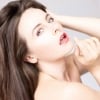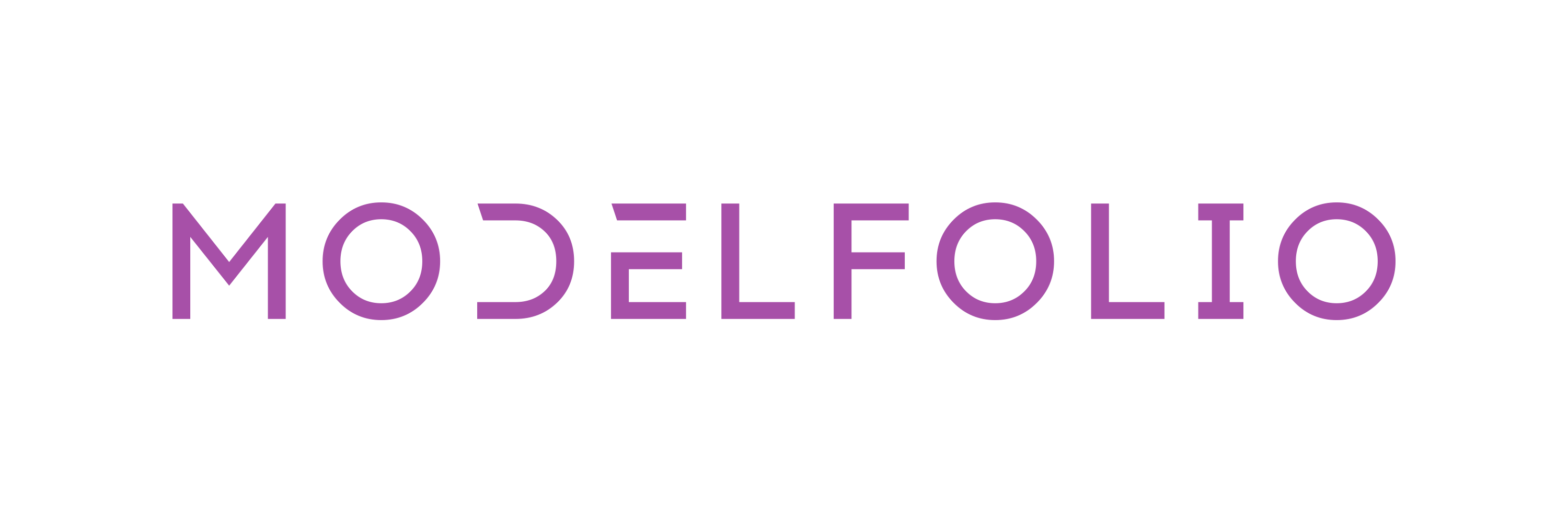The most important factor to take into account in the time leading up to/before a photo shoot is communication. Furthermore, the quality of communication is particularly important: nailing the vital details is essential to help the people involved be organised and deliver the best they have to offer for that assignment. In this article I’m touching upon the importance of quality in communication and being aware of the key aspects that creatives should exchange with each other during the discussions that occur in the organisation period of a shoot. Rather than write big paragraph chunks which may overlap in detail/go off on tangents, I have written scenarios to help the understanding of where communication comes into play in different situations.
Scenario #1: Photographer (or model) casting offering paid work to the other party.
The initial communication is in non-direct in the format of the casting call and this applies to any creative who may be casting for something specific. If it’s a photographer with a specific look they want in a model/particular levels then this should be stated clearly so that the model can see if they are suitable or not prior to applying… if a model is casting for a photographer for a specific photoshoot/event then details of said event should be touched upon to allow the photographer to decide if it’s something they may be interested in. On the flip-side… applicants of the casting should make an effort to acknowledge the details in the casting (if they are specific) as this saves time finding out later that the person applying is not suitable for the casting call/cannot make the given date (if specified) etc. Castings are useful for getting a lot of (what would be) email-tennis out of the way in the early stages… things like shoot levels, rates, location, dates, duration can all potentially be covered depending on the nature of the casting which cuts to the chase for potentially interested creatives.
Of course every instance of a casting call offering paid work to a model will be different, some will be very particular about the brief details whilst others could be in a more “throwing it out there to see whose interested” form. Either way, as a model applying; it is always worth doing any minor research that needs to be done prior to first contact… this could be checking travel options/time to see if it’s physically possible to get to the location of the shoot… checking the person’s profile to see the style of work they create and if the model feels they suit it… Making sure they can physically make the date of the shoot if it has been pre-specified in the casting… Etc. So upon applying the model will be one step ahead of being organised for the shoot if the photographer decides to accept their application. Once the casting is filled and a candidate model confirmed then there will be further opportunity to discuss the shoot details which could be fine-tuning ideas.
For applications to the casting that may have been unsuccessful, it is usually very useful for some kind of notification of the decline (always in a polite manner of course in any instance). This means that the rest of the candidates who applied can move on to look for other suitable work and do not need to be waiting on a reply if the date was a specific one. That said, it is expected for any casting offering pay to get an exceptional level of interest… if some applicants do not receive a reply then it is most likely for reasons of practicality/running out of time in the day/forgetting than being deliberately ignorant, but it is good for the casting creator to notify where possible.
Scenario #2: Direct contact with a creative about a shoot enquiry (photographer contacts model or vice-versa).
This is a very personal form of contact from the very start, the photographer/model getting in touch with the other party would typically do so because they already have a specific shoot pre-thought for which they think their fellow creative would be suitable for. As such, first contact (if assuming the parties are not already familiar/have not yet worked together) should be polite and friendly; a typical ice breaker being “I like your work” or ”you have a good look” …But most importantly, the opening message should elaborate on some details about the shoot that would take place – it’s all about thinking ahead. A one liner such as “want to work with me?” can still get the ball rolling but if you can get to the point from the start then this helps the person you are contacting decide from the beginning if the shoot offer is suited to them or not. You don’t need to have a full script of ideas pre-written like a dissertation by any means but aspects such as: Styles and levels to be covered/the desired studio or location/the date of the shoot (if set)/the duration of the shoot/rate on offer (if set)… The time you spend playing email tennis before these details are revealed is all time you could be spending searching for another model/photographer if it turns out, 8 emails later, that the person you message initially is not able to commit to the shoot.
For a proper confirmation of a shoot the essential details that need to be agreed between parties are: date, time, levels/styles, location, total compensation and duration. Those are your basics that you are mutually agreeing to when you have both virtually “shook hands” on the matter. Travel arrangements (if any) should also be touched upon early on because obviously both sides must know for definite if they can physically be at the location on the date at the time agreed. Everything else can be talked about afterwards such as suggested items to bring, meeting point (if different to the shoot location), further ideas etc.
The exchange of a contact number is very sensible because it is very likely that both parties have other things going on in their lives which means they will not be ready available to answer an email 24/7. In an emergency, you generally have better hope of reaching the other person quickly with a phone call. It also helps when meeting.
Scenario #3:
A travelling model or photographer on a shooting tour/visiting the area arranging shoots mid-trip.
It is particularly common for models to tour different areas away from their base location: this allows them to connect with photographers from much further afield who would have otherwise probably not had the chance to work with them. Similarly, photographers may plan trips like this as well to work with different models at different studios/locations. Or of course either could be visiting an area for other reasons (business, holiday, visiting people). Either way: organising shoots mid-trip poses more challenges than the average “go to the shoot destination and back home in one day” format.
If a model is on a shooting tour then they will have an excessive amount of organising to do to coordinate things accordingly for the shoot bookings to flow with ease. There is a lot a think about such as: travel (booking trains/planning car routes), accommodation, timings of shoots (if there are more than one in a single day)… It’s a very hectic time for a model and the best thing that they can get from the photographers that may be booking the model on the trip is swift/quality communication. If a model is waiting to hear back from one photographer about a shoot confirmation, a prolonged wait can disrupt the models ability to organise anything else in the fear of double-booking/buying the incorrect train tickets if using public transport… The most appreciated thing a photographer can do for a touring model before they shoot together is deliver communication quickly and with the relevant details as early as is possible to get the shoot confirmed so the model knows what they are doing on that day of their tour. It is very necessary for the model to give theirs and take the numbers of all the photographers they shall be working with on a tour because once the tour begins it can be much harder to get online and send an email if the model needs to get in contact.
Likewise if a photographer is travelling/staying in a particular area and organising shoots along the way then they too might have to coordinate arrangements with other commitments. The sooner a model can provide a confirmation that they are available on a particular day of the photographer’s trip then this makes life far easier for the photographer to ensure they can fit everything into the same day/week. It is extremely helpful to parties who may be completing their trip using public transport rather than their own car to have the offer of pick-up/drop-off from stations too where possible hence this is a worthwhile matter to discuss when arranging to work with a travelling model/photographer.
Scenario #4
A “TF” or trade/collaboration shoot is being organised.
There should typically be a great deal more in-depth discussion about ideas/expectations from a shoot when a collaboration shoot is being organised: this is because both parties should be thinking about exactly what they want to achieve out of the shoot and expressing it to the other person. Neither one is a mind-reader so if one creative has an idea they really want to try then it’s up to them to mention their thoughts before the shoot happens because it may be that there is a very specific set of needs required to achieve this specific image… There is nothing/very little you can do about it if you get there on the day, only just then bringing it up in which case the other party may not be equipped with the suitable kit to help achieve the shot.
In the case where one creative is getting paid in cash by another to do an assignment; it’s relatively straight forward because they follow the brief supplied to them/can chip in ideas when welcomed or when the time is right but during a complete collaboration – the shoot brief becomes more complex because the outcome is an equal split of what both parties want to create. Talk about ideas until the cows go home; “is this possible?” or “can we do this?” …bouncing off each other is vital to create a rapport whereby you have your individual creation interests/goals but they overlap as you work. The communication is so important before and during to keep the flow of ideas from diminishing and to ensure that both parties are happy with the outcome.
After the shoot, communication is still just as important because of course, the compensation exchange is still to be completed in the form of finished images. It’s important for the photographer to appreciate that they’ve already got their end of the bargain because they take home the memory card full of images at the end of the day having had the model give their time up front; so images sent over as promptly as possible are going to be considerably welcomed by the other person(s) whom were involved in the shoot as they will probably be itching to see the results. Discussing all the shoot agreements prior to the event are essential, but a good practice which keeps the other party involved in generating the final outcome together is allowing the model (and makeup artist if involved) to be a part of selecting the edits too because different creatives will always have a different eye for different shots and an equal collaboration shouldn’t just finish when the shooting slot is finished.
Scenario #5
There are more than two creatives involved on a planned photo shoot.
Many shoots organised on a freelance basis will consist of just two parties: the photographer and the model. However it’s certainly not uncommon for shoots to have larger numbers of people on board: a duo model shoot for example or when a makeup artist is present. In such a case, the communications need to reaching each and every person involved so that when everyone turns up on the day, they know exactly what they are doing and nobody arrives unprepared. Yes, it is a third more effort (or double/triple depending on the size of the team) required in the pre-shoot communication stages but it’s necessary so that everyone is on the same page on the day of the photo shoot.
If there is going to be a makeup artist/stylist on board as well as the model/photographer, then this member of the team should be just as involved in the shoot planning as anyone: they have kit to organise and bring, seeing the models images before the session is necessary to discuss looks that will be created and if the shoot is a 3-way collaboration then obviously all the creatives involved will want to get something out of the shoot that is useful to them hence good communication from the start to clarify what each person expects to get from the shoot. If there is a very specific and complex look wanted for the stylist to create for one of the sets then this and other look requests should be highlighted prior to the day as most makeup artists and stylists have different training/abilities in different genres so if Special effects makeup is required, then it’ doesn’t achieve much dropping it on the person on the day when they walk through the door ready for the shoot. Likewise, with hairstylists/wardrobe stylists having the tools ready for their job.
For a situation with a duo model pair, again it’s wise working to communicate with all involved so that everyone is on the same page. Both models need to know the styles they will be modelling – if there will be a lot of contact between the models then again: this could be clearly elaborated upon in communications prior to the shoot. Levels are the very important issue: the easiest thing is typically to book two models to work together with very similar levels/limitations… however it is, in some situations, totally fine (if all models are comfortable) to have models of different levels modelling simultaneously on set covering their maximum levels – just because one model does not personally work to nude levels does not always mean she will feel uncomfortable in the presence of another model who does… this is where the pre-shoot communication is so important. Are all models fully aware how they will be posing together and to what levels? Take care of any awkward situations before they happen.
A quick summary…
-Good quality communication does NOT mean you have to be a poet, write a lengthy personal statement… it means getting those essential details (details which are fundamental for confirming a shoot) across to the other person as early as possible.
-If you are looking to achieve something very specific from a photo shoot, communicate the brief/ideas with all other parties involved. They can’t act to help you achieve this if they don’t know in the first instance.
-Don’t assume that a non-reply/late reply from an enquiry/casting application is deliberate rudeness, photographers, models, makeup artists and stylists are all human beings with lives outside of their job/hobby… particularly when a model is full time at their profession, they may be travelling and on-set shooting for long hours.
-Be as well-prepared as you possibly can be for a photo shoot; the more details you have nailed before the shoot, the less likely things are to go wrong.


